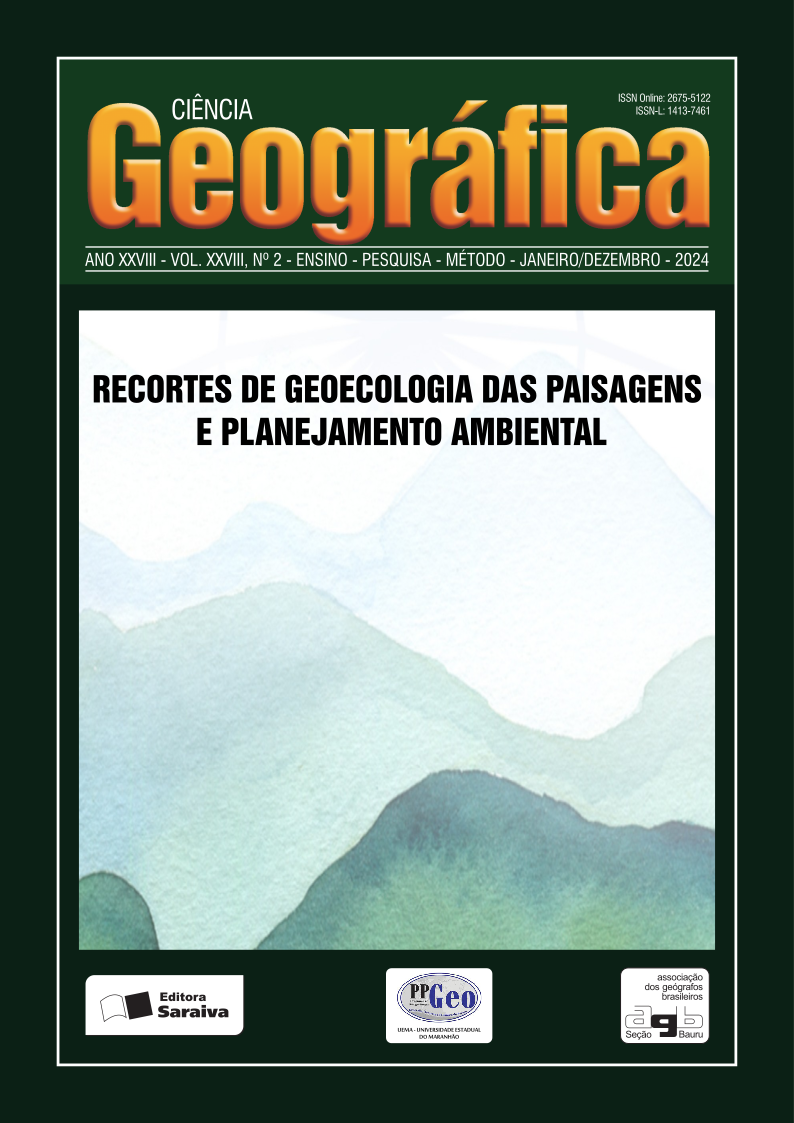Diagnóstico da fragmentação florestal da bacia do rio Buranhém – extremo-sul da Bahia: métricas e conectividade da paisagem
DOI:
https://doi.org/10.18817/26755122.28.2.2024.3859Palavras-chave:
Geotecnologias. Efeito de Borda. Mata atlântica. Análise geoespacial.Resumo
O presente trabalho possui o objetivo principal da realizar o diagnóstico ambiental da fragmentação florestal da BH do rio Buranhém localizado no Extremo-Sul do estado da Bahia, utilizando-se das geotecnologias e métricas da paisagem sob a ótica da ecologia da paisagem. Inicialmente, dividiu-se a bacia em três áreas visando quantificar qual área possui maior número de fragmentos. Para análise da fragmentação da paisagem, utilizou-se imagens do satélite Sentinel-2 na qual a partir da classificação supervisionada foi possível mapear e quantificar os fragmentos florestais. Posteriormente calculou-se o Índice de Circularidade (IC) para mensurar os fragmentos mais suscetíveis aos efeitos de borda. Dos 22.453 fragmentos mapeados 94,8% são menores que 5 ha. Na área 2 existe a maior concentração de fragmentos florestais, sendo estes superiores a 250 hectares, relativo ao efeito de borda a maioria (74,2%) dos fragmentos possuem baixa suscetibilidade ao efeito de borda. Dessa forma, conclui-se que a vegetação da mata atlântica se encontra bastante fragmentada na bacia, com a expansão da matriz pastagem, caso medidas de planejamento e proteção ambiental não sejam implementadas, a tendência dos fragmentos maiores é estar mais suscetível ao efeito de borda.


